The content of the article
Bitter wormwood, unexpectedly grown in a summer cottage, is perceived by many as a useless weed, which, moreover, is quite difficult to remove. However, despite the fact that wormwood is rarely found in pharmacies on the same shelf with chamomile and calendula, it has a number of healing properties and occupies an important place in traditional medicine.
Wormwood is one of the most bitter plants, many are scared away by its specific taste: there are fears that the use of wormwood can cause heartburn, and in worst cases, disruption of the digestive system. But in fact, the correct use of this plant will help to cope with a wide range of diseases.
How to collect wormwood
This plant prefers desert places: often wormwood can be found on abandoned sites, as well as on roadsides or in forest debris.
Bitter wormwood is a herbaceous plant that can reach a height of two meters. The stems of wormwood are erect, branching to the top. At the base, its leaves are bicinnate, on short petioles, on the apex are triple. The flowering period is July and August, at this time yellow basket flowers appear, collected in inflorescences in the form of panicles.
The root leaves of this plant, as well as foliage from the tops (it is called grass) and flowers, are suitable for use as a medicine. The wormwood and grass are collected during flowering, and the leaves - before it begins. If this rule is not observed, the grass will darken during drying, and the flowers may scatter.
A self-assembled plant must be thoroughly washed: despite the anti-inflammatory effect, poor-quality raw materials can bring infection into the wounds. Wormwood should be dried in the shade, laid out in a thin layer and periodically turned over. Subject to these rules, dried wormwood should retain its smell and taste. You can store raw materials for two years.
Medicinal properties and chemical composition
The diverse healing effect of wormwood is due to its chemical composition. It includes:
- Essential oil. Thanks to it, wormwood affects the central nervous system, which stimulates the body's fight against infectious diseases, and also helps to improve the functioning of the respiratory system.
- Bitter glycosides. Because of them, wormwood has a specific smell and taste, irritates the taste buds in the oral cavity and, thereby, improves the functioning of the digestive system, in particular, enhances the secretion of bile.
- Ascorbic acid. With its help, wormwood helps to strengthen the immune system, fight infections. In addition, acid promotes the absorption and synthesis of a number of useful trace elements in the body.
- Saponins. They have a sedative, diuretic, expectorant effect.
- Volatile Stimulate cardiovascular activity, and also help in the treatment of trophic ulcers and purulent wounds.
It should be remembered that wormwood is used as an accompanying method of treatment along with a complex of other drugs.
Important! Wormwood is toxic, therefore, in its application, the dosage should be strictly observed. Exceeding the course of treatment is also dangerous, wormwood should not be drunk for more than two weeks. An overdose of this plant may cause hallucinations, convulsions and convulsions.
Contraindications
There are a number of strict contraindications for use:
- Hypersensitivity to wormwood components.
- Liver failure.
- Renal failure.
- Pregnancy.
- Lactation period.
- Children's age up to 12 years.
Indications for use
Wormwood is used in the treatment and prevention of a wide range of diseases. Its main properties include:
- tonic;
- wound healing;
- choleretic;
- antispasmodic;
- hemostatic;
- expectorant;
- painkiller;
- antipyretic;
- sedative;
- tonic;
- antifungal;
- diuretic;
- anti-inflammatory.
Due to the rich chemical composition of wormwood, various preparations based on it are used in the treatment of the following groups of diseases:
- Respiratory tract diseases. Wormwood helps to eliminate sputum, relieves spasms, improves the functioning of the respiratory system.
- Urinary tract diseases. The plant helps to remove fluid, dulls pain in urolithiasis.
- Diseases of the gastrointestinal tract. Wormwood-based preparations normalize the level of acidity, improve the functioning of the stomach and pancreas, help relieve inflammation, promote the secretion of bile.
- Rheumatic diseases. With external use, wormwood reduces pain, relieves joint inflammation.
- Skin diseases and injuries. Wormwood protects open wounds from infection and inflammation, relieves pain, and also promotes the speedy healing of tissue.
- Parasites. Internal and external use of wormwood helps to effectively deal with worms.
- Sleep disturbances. Thanks to its sedative effect, wormwood normalizes sleep, helps to cope with insomnia and depression.
Ways to use
Wormwood is suitable for both indoor and outdoor use. The following types of drugs are made from it:
- Decoction.
- Tincture.
- Powder.
- Juice.
- Ointment.
Decoction
The classic decoction of wormwood helps in the fight against diseases of the gastrointestinal tract, tuberculosis, and fever. Thanks to its anti-infectious properties, it also helps eliminate bad breath. Wormwood broth enhances appetite, is used as a restorative and antipyretic agent. For its preparation, both leaves and grass and wormwood flowers are suitable. Two tablespoons of crushed raw materials are poured with a glass of boiling water and boiled for 2-3 minutes. The strained broth should be diluted with another glass of water and applied a tablespoon three times a day before meals.
For external use, the decoction has a wound healing and hemostatic effect, helps fight irritation and inflammation at the site of mosquito and bee stings. Use wormwood broth and for enemas in the fight against worms. Store the broth for no more than two days.
Tincture
To prepare tincture of wormwood, pour a tablespoon of the plant with 10 tablespoons of 70 percent alcohol, and then insist for two weeks. Apply the drug after filtering a teaspoon three times a day (before meals).
Indications for use - stress-induced insomnia, worms, viral colds. Outwardly, tincture is used in the form of compresses for eczema and fungal infections, as well as for rubbing with rheumatic joint pain.
Unlike a decoction, wormwood tincture has much more contraindications. It can not be used with?
- stomach ulcer or duodenal ulcer;
- increased gastric secretion;
- acute form of cholecystitis;
- hyperacid gastritis;
- as well as hypersensitivity.
Tincture is recommended to be taken until the symptoms of the disease disappear. Exceeding the daily dose or increasing the treatment period is fraught with the occurrence of headaches, convulsions, tremors. Allergic side effects include itching and redness, Quincke's edema, heartburn, nausea, and diarrhea.
It is important to remember: absinthe and vermouth, the composition of which may seem like an ordinary tincture of wormwood, do not have medicinal properties, and are not used in folk medicine.
Powder
Powdered wormwood grass take half a teaspoon after eating. Its effect is similar to tincture, but the powder acts more aggressively, therefore, its use must be treated with greater accuracy, the course of treatment should be no more than seven days. The recommended dosage regimen involves a reduction in dosage. On the first day it is drunk six times, on the last - only three.
The effect of taking the powder is most noticeable in the fight against worms: in this form, the drug passes more slowly through the intestines, which allows more active action on parasites. Use wormwood powder and for prevention, but not more often than twice a year.
Juice
Wormwood juice, which is squeezed from fresh leaves and branches of a plant, is taken only with honey because of its bitterness - a tablespoon three times a day before meals.
For external use, the juice has a painkiller and anti-inflammatory effect, it is used for dressings for injuries and calluses. It also helps stop bleeding, disinfects open wounds and accelerates their healing.
Ointment
For external use for injuries, sprains, burns, bruises and eczema, wormwood ointment is also used. Three recipes for its preparation are popular:
- A teaspoon of thick tincture of wormwood is mixed with vegetable oil (100 grams).
- Half a liter of melted fat mixed with freshly chopped wormwood (100 grams) is simmered in a water bath for two hours, then decanted.
- The crushed fresh wormwood (glass) is poured with olive oil, tightly closed and insisted for two weeks until the ointment acquires a green tint.
Regardless of the method of preparation, wormwood ointment should be stored in the refrigerator.
Combination with other drugs
Wormwood is often used in combination with herbs and flowers to enhance their effect. So, to combat insomnia, it is recommended to take a decoction of wormwood and mint, since both plants have a calming property. To achieve the same goal, you can mix wormwood with chamomile.
In combination with tansy, wormwood is used to combat parasites, in particular, worms, fleas and chlamydia. Both plants have an antibacterial property. Cleaning parasites with a decoction of wormwood and cloves or garlic is also effective.
To normalize the metabolism, as well as to combat headache and depression, it is recommended to take a decoction of wormwood and St. John's wort or chamomile flowers.
Depending on which disease it is planned to treat using wormwood, it can be mixed with various natural preparations, there are no strict restrictions on this issue. However, it is important to sensibly assess the side effects and contraindications to the use of all components.
Cosmetology
Bitter wormwood is actively used in cosmetology, since it helps to care for oily skin, to fight acne, excessive sweating and inflammation.
The plant has an anti-inflammatory effect, but, despite this, the procedure for cleansing the face before applying wormwood cannot be neglected. All sanitary standards must be observed, otherwise the positive effect of using this plant will not be so noticeable.
For problematic facial skin, washing with a decoction of wormwood is suitable, it can also be frozen and used as a tonic. Effective and steam baths with a decoction of wormwood, as well as the treatment of problem areas of the skin with tincture.
Shredded fresh wormwood or powder is used in face masks. They are not recommended to be done more than twice a week, there are no restrictions on the duration of the course. The following recipes are suitable for normalizing the condition of the skin:
- Oatmeal is brewed in a wormwood broth (in proportions 1 to 1) and applied to the skin for 20 minutes, then rinse with cold water.
- A decoction of wormwood is added in equal proportions to the cream against dermatitis, then applied in a thick layer for 15-20 minutes.In this case, wormwood enhances the effect of the cosmetic product, helping to quickly cope with inflammation.
- A tablespoon of wormwood is brewed in 150 milliliters of water, let it brew for about an hour. The broth is decanted, and the remaining herb is mixed with sour cream (2 tablespoons). The resulting mixture is applied in a thick layer for 15 minutes, then removed with a napkin, and the skin is rinsed with the remaining broth. This mask helps fight redness.
- To heal acne and fight against oily sheen, a mask of wormwood, sage, St. John's wort and oak bark is suitable. A tablespoon of each drug is mixed in two glasses of water, boiled for 10 minutes. Warm herbs are applied to the face for 20 minutes, then washed off with a decoction.
- A mask of wormwood and chamomile helps fight acne and burns. For her, a decoction of herbs in equal proportions is necessary. It moistens a napkin, which is used as a compress on the affected areas of the face. It should be kept for half an hour, then it is recommended to wash with the remaining broth.
Alcoholism
Wormwood is one of the herbs whose use helps in the fight against alcoholism. When used correctly, this plant helps to cope with a hangover, as well as overcome alcohol dependence.
As a rule, it is recommended to use it without the knowledge of the patient, because alcoholics often deny their addiction and will not take the drug on their own. In this case, it is necessary to carefully study the possible side effects, as well as the likelihood of allergic reactions, at the risk of their occurrence, the use of wormwood to combat alcoholism is prohibited.
The development of alcoholism is associated with withdrawal symptoms. With a sharp rejection of alcohol after its long-term use, a person has a number of psychopathological and somatoneurological symptoms, in particular, dry mouth, tachycardia, sweating, heaviness in the head, vomiting, tremor, in the worst cases anxiety, negative attitude to others and nightmares. To avoid the manifestation of these symptoms, the patient again uses alcohol, which dulls their manifestation.
Wormwood in this case helps to cope with withdrawal symptoms, and therefore the need for further alcohol intake in a dependent person gradually disappears.
In the fight against alcoholism, several recipes using wormwood are effective. Drugs take no more than 10 days.
- Brew a teaspoon of wormwood in two glasses of boiling water, insist for half an hour. Strained broth take a quarter cup three times a day before meals.
- A decoction of wormwood and centaury (in equal parts) is taken in a tablespoon three times a day.
- Brew a tablespoon of wormwood with a glass of boiling water. The strained broth should be taken in three doses before meals.
- A mixture of tinctures of thyme, wormwood and centaury (4 to 1 to 1) take a tablespoon three times a day.
In order for the bitter taste of wormwood to not cause suspicion in the patient, it is recommended to add honey to the decoction and tincture.
Video: useful properties of wormwood

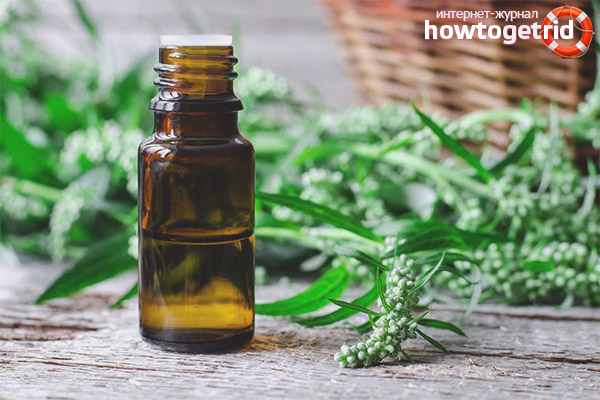

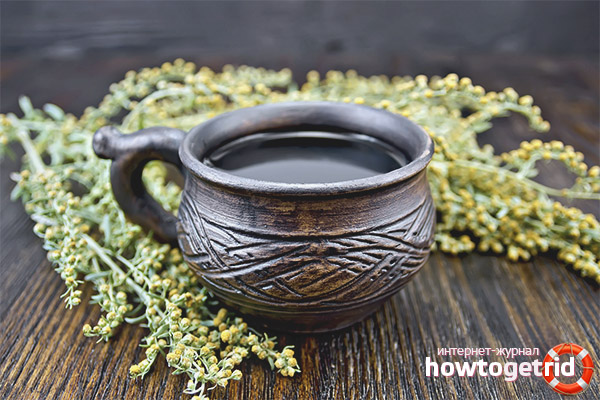

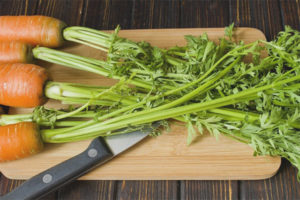
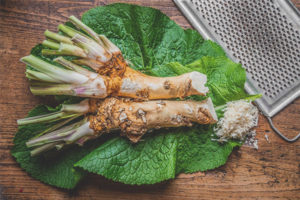
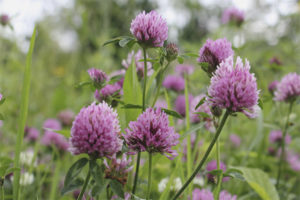
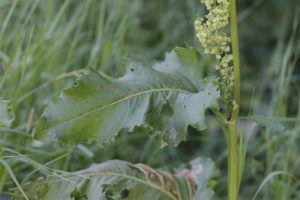
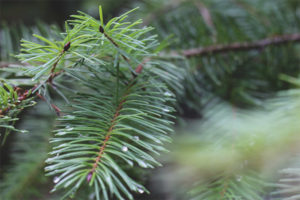
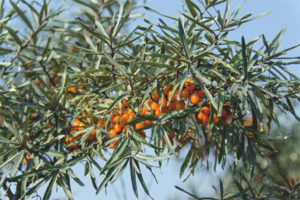
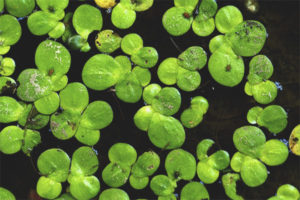
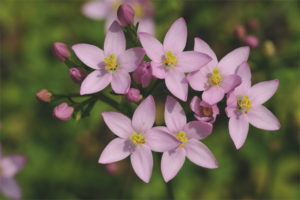
Submit